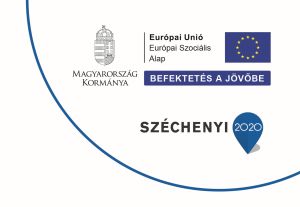Tarr, Bence, Szabó, István, Tőzsér, János (2024) Predicting somatic cell count in milk samples using machine learning Annales Mathematicae et Informaticae. 60. pp. 159-168. ISSN 1787-6117 (Online)
|
pdf
AMI_60_from159to168.pdf Download (446kB) [error in script] |
Absztrakt (kivonat)
Milk quality is an important factor both for the farmers to be able to sell their products and for the milk industry to be able to plan its production based on quantity and quality. Milk quality has a direct link with cow health, more specifically with utter health. One of the most common utter diseases is mastitis. It always captures a lot of interest based on its frequency and cost as a dairy disease which eventually leads to an involuntary and premature culling of milking cows and decreased milk yield. The genetic evaluation of mastitis is very difficult as it is a low heritable trait and categorical in nature [2]. That is why it is necessary to find markers that could predict the occurrence of mastitis. One of the widely used such markers is the somatic cell count (SCC) [9] which is considered to be the most suitable indicator trait for mastitis resistance given its medium to high genetic correlation with mastitis and its greater heritability than mastitis. The SCC is also easy to record in the practice. The selection for lower SCC in milk has a positive effect on the incidence of mastitis. The selection against high SCC also does not deteriorate the immune system of cattle and decreases the risk of infection at the same time. The genetic evaluation [1] of this trait is mostly based on somatic cell score (SCS), a logarithmic transformation of SCC to achieve normality of distribution. In our study, we used the milk database of Holstein cows from 3 different farms. From each farm, we had altogether 8000 samples tested. The samples were analyzed using chemical methods every month for a year. 11 different types of data were recorded from each sample. Our aim was to find the best mixture of recorded data that would predict the value of linearized somatic cell count. After the logarithmic linearization the SCC results were divided into 3 main groups (based on the probability of mastitis). Thus our prediction problem turned into a classification problem. We used machine learning to train our algorithm. We experimented with different types of classification methods and found good results for the prediction of SCC in milk samples. We changed the input variables as not all the 9 measured input variables will be necessary for good prediction results. Our preliminary results show that using machine learning it is possible to build a model that can be used to predict mastitis in dairy cows based on variables generally analyzed during milk quality checking tests.
| Mű típusa: | Folyóiratcikk - Journal article |
|---|---|
| Szerző: | Szerző neve Email MTMT azonosító ORCID azonosító Közreműködés Tarr, Bence NEM RÉSZLETEZETT NEM RÉSZLETEZETT NEM RÉSZLETEZETT Szerző Szabó, István NEM RÉSZLETEZETT NEM RÉSZLETEZETT NEM RÉSZLETEZETT Szerző Tőzsér, János NEM RÉSZLETEZETT NEM RÉSZLETEZETT NEM RÉSZLETEZETT Szerző |
| Kapcsolódó URL-ek: | |
| Kulcsszavak: | somatic cell count, machine learning, prediction using AI, milk quality |
| Nyelv: | angol |
| Kötetszám: | 60. |
| DOI azonosító: | 10.33039/ami.2024.02.004 |
| ISSN: | 1787-6117 (Online) |
| Felhasználó: | Tibor Gál |
| Dátum: | 09 Feb 2024 14:47 |
| Utolsó módosítás: | 25 Dec 2024 16:01 |
| URI: | http://publikacio.uni-eszterhazy.hu/id/eprint/7963 |
 |
Tétel nézet |

